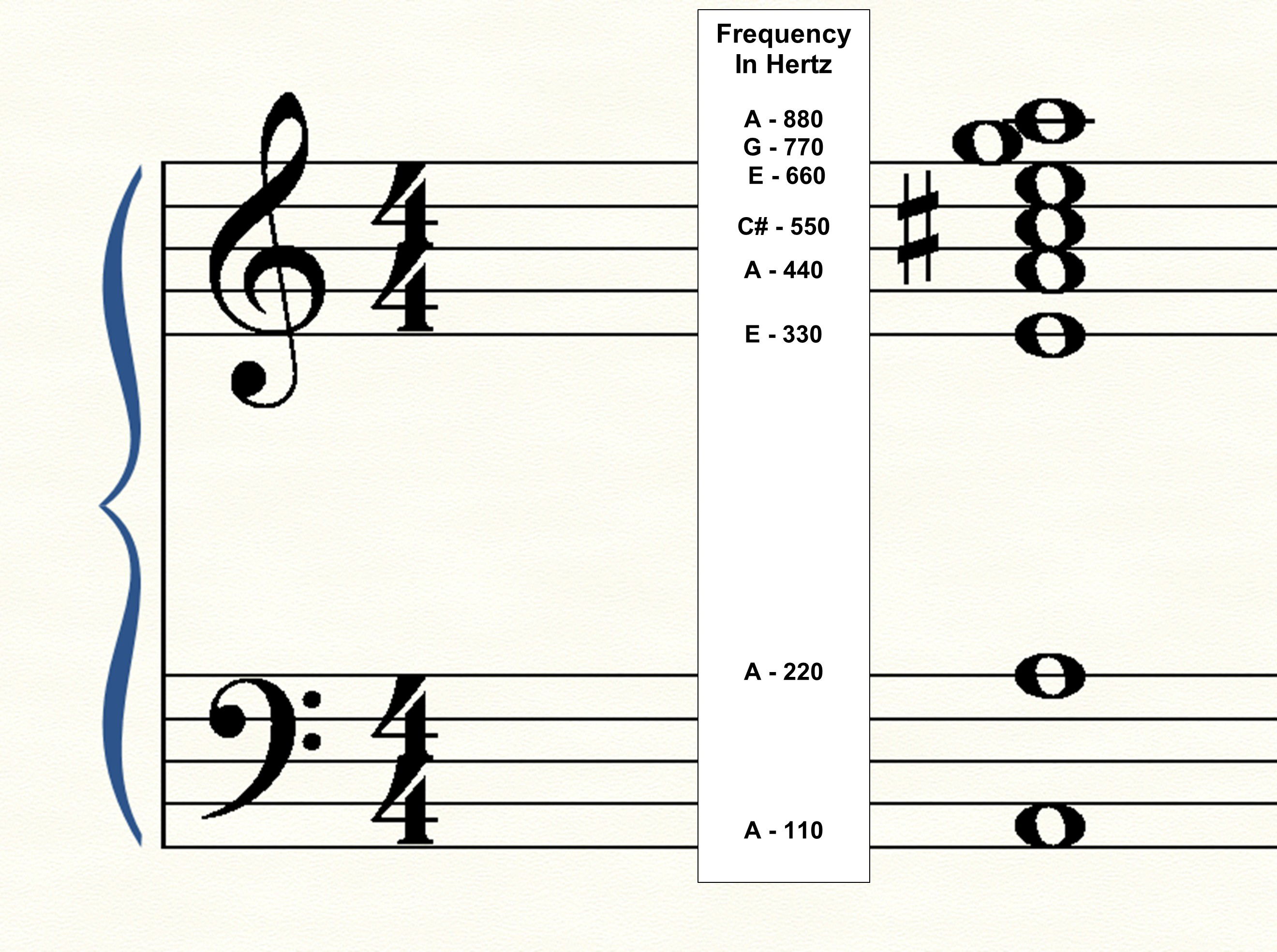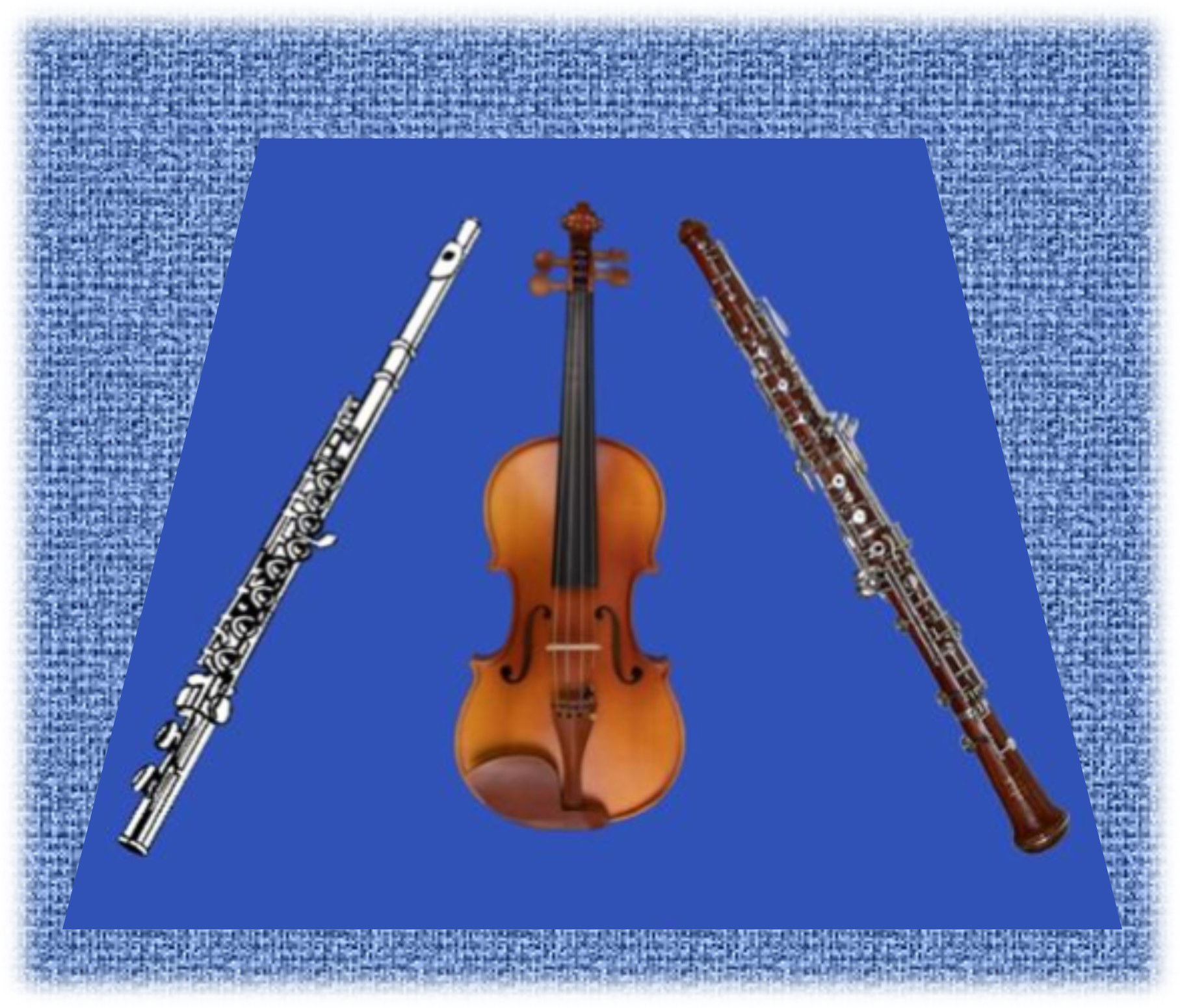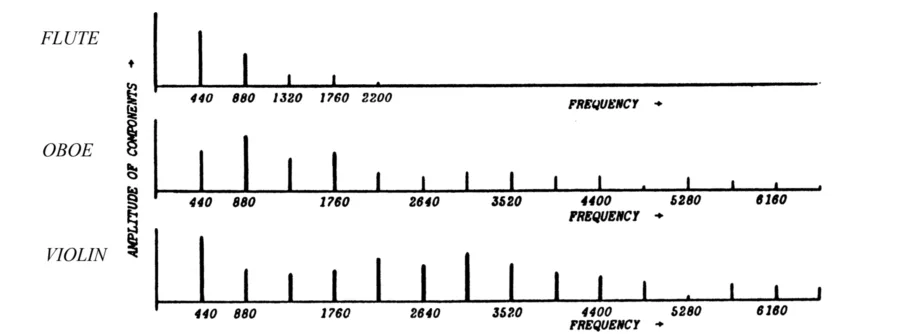How the Overtone Series Affects Music Composing and Arranging

The overtone series, often referred to as the harmonic series, is a fundamental concept in music theory that shapes the way composers and arrangers approach writing for both choral and instrumental ensembles. Understanding this series is essential to crafting music that resonates with listeners, enhances harmonic coherence, and supports the expressive potential of voices and instruments.
Even if composers or arrangers don’t understand the math or science behind it, it is important that they understand the fundamental results of certain applications of it. It’s similar to being able to use a computer even if one doesn’t understand all of the math or science behind it. For many music writers, the understanding and use of the overtone series is acquired more through theory knowledge and writing experience. Those harmony mistakes that sound so horrible are most likely the result of mishandling the overtone series.
In this article, we explore how the overtone series affects writing and arranging music for choral and instrumental groups, focusing on its influence on harmony, voice leading, orchestration, and texture. It may help to explain why certain harmonies and chords work well one way, and why others work well another way, and why some never will work at all.
What is the Overtone Series?
The first thing that this article won’t do is discuss the Overtone Series in detail. There are more than enough textbooks and websites that can discuss this phenomenon in as much or as little detail as one would like, and from a number of different perspectives, e.g. musical, physical, mathematical. However, here is a cursory explanation of the Overtone Series.
The Overtone Series is a natural phenomenon that occurs when a note is sounded, particularly by a vibrating string, column of air, or vocal cords. When any string or wind instrument is played, or when a person sings, a harmonic series is present above every pitch. When any woodwind, string, or brass instrument creates a pitch, a harmonic series is present above every pitch.
The fundamental pitch of this sound, called the first harmonic, or fundamental tone, is the lowest and most prominent note. However, the sound also contains additional, higher-frequency harmonics (or overtones) that are mathematically related to the fundamental pitch. These overtones are whole number multiples of the fundamental frequency and contribute to the timbre or "color" of the sound.
How Does the Overtone Series Affect Our Perception of Music?
An octave is naturally divided into twelve equal parts (the half-steps in a chromatic scale). This division of the octave is our brains’ interpretations of a simple mathematical phenomenon. This interpretation starts with the overtone series being present in every tone. When a tone is created, any wavelength that can “line up” with the lowest pitch will create a frequency with greatly increased resonance. For example, the frequency of A2 is 110 Hertz (Hz), which means that it vibrates 110 times per second. If you double that frequency, you create a sound wavelength that will align with our original wavelength every two times, creating our first overtone above the fundamental at the ratio of 2:1. If you triple the original frequency, you will get the next overtone at 330 Hz, and so on. 330 Hz is the pitch E3, a perfect 12th above our original pitch. It is this naturally occurring resonance above every pitch that creates the need for an octave to be divided into twelve. If you try to divide the octave any other way, you won’t create the naturally occurring resonances present in all sounds.

The influence of these ratios is among the most important concepts for understanding the way in which humans perceive and process sound. This concept explains why humans find certain intervals consonant or dissonant. Simpler ratios are heard as consonant whereas complex ratios are heard as dissonant.
Also, the importance of simpler ratios is easily observed in the circle of fifths. If you begin on any pitch-class and begin moving by ascending perfect 5ths (or 4ths), you will find yourself back at the beginning after cycling through all twelve pitch-classes. We call this the circle of fifths. C - G - D - A - E - B - F-sharp - C-sharp - G-sharp - D-sharp/E-flat - B-flat - F - C
The overtone series is also the basis for intonation. Using the ratios from the overtone series, we can determine what is “in tune”. For example, an octave is a frequency that is exactly twice as high as the given pitch, and a true Perfect Fifth is a frequency that is 1.5 times higher than the given pitch.

The Role of the Overtone Series in Music Composition and Arranging
1. Harmony and Chord Structure
The overtone series has a direct influence on how composers construct harmony. The first few overtones, which include the octave (2:1 ratio), the perfect fifth (3:2 ratio), and the major third (5:4 ratio), are the building blocks of traditional Western harmony. These intervals are inherently consonant because they align closely with the natural overtone series. As a result, music that adheres to these intervals often feels stable and harmonious. Idealized voicing for chords often mimic the overtone series by placing each voice along the overtone series of the lowest voice.
When writing for choral and instrumental ensembles, composers and arrangers exploit the overtone series to create harmonic textures that sound natural and pleasing. For example, triads (root, third, fifth) are derived from the overtone series and are fundamental to the construction of Western harmony. By understanding the overtone relationships, composers can arrange voices and instruments in ways that emphasize these consonant intervals, ensuring that the harmonic foundation of the piece is strong and satisfying.
In a contrary move, music writers may intentionally use certain dissonances to provide some intense color to a chord or phrase. (Using intense color throughout a whole work would lessen the intensity of any of the chords, making the whole piece as bland as if boring chords were used.)
2. Voice Leading and Instrumental Doubling
The overtone series also plays a crucial role in voice leading, the smooth progression of melodic lines from one note to the next. When arranging for ensembles, voice leading must consider the natural tendency of pitches to move toward the most consonant intervals. For instance, a voice leading from a note in the overtone series to another note in the same series will typically create a more seamless, consonant progression.
Instrumental arrangers often use the overtone series to guide the doubling of voices and instruments. For example, in choral music, the soprano and alto parts might be written so that the sopranos sing higher overtones, while the altos emphasize lower overtones. Similarly, in orchestration, strings, winds, and brass may be paired according to their natural harmonic resonances. By ensuring that instruments or voices align with their overtones, arrangers create a richer and more unified sound.
3. Tuning and Timbre
The overtone series is integral to tuning systems and the perceived timbre of instruments. In Western music, the twelve-tone equal temperament system divides the octave into twelve equal intervals, but this system does not perfectly align with the overtone series. As a result, certain intervals in equal temperament, particularly the major third and minor third, are slightly out of tune compared to the natural overtone ratios.
However, understanding the overtone series allows composers and arrangers to adjust tuning practices in a way that aligns more closely with natural resonance. In some choral and instrumental arrangements, microtonal adjustments are made to better capture the pure intervals of the overtone series. For instance, a conductor might adjust tuning in a choir to achieve a more "pure" sound that resonates with the natural harmonic series, enhancing both the intonation and timbre of the performance.

4. Orchestration and Instrumental Color
Each instrument in an ensemble produces its own set of overtones, which influence its timbre. String instruments like violins or cellos emphasize the lower partials of the overtone series, resulting in a rich, resonant sound. Wind instruments, on the other hand, have their own characteristic overtone structures, leading to different colorations of sound. Brass instruments, with their powerful and bright timbres, focus on the higher overtones.
When arranging for ensembles, composers and arrangers must consider the unique overtone structures of each instrument to create a balanced and harmonious orchestration. By selecting appropriate instruments for particular parts and ensuring that their overtone series complement each other, arrangers can create textures that highlight the distinct color and resonance of each section while maintaining overall harmonic coherence.
If you look at the diagram below, you’ll see that a flute has almost no overtones. The notes it plays are almost pure, but it has not “cutting” power. That’s why it takes more of them to produce a loud volume.
And, as you can see, the oboe not only creates a lot more overtones for each note, the loudest one is actually the first octave above the fundamental tone. When it plays the A-440, the A-880 is louder than the note being played.
The real standout is the violin. The reason that a well-played violin has such a rich sound is that not only does it have a relatively large number of overtones, some of the ones that are the loudest are intervals of a third or a second above the overtone octaves.

5. Texture and Polyphony
The overtone series also shapes how composers create texture and polyphony in ensemble music. When writing for multiple voices or instruments, composers often explore the overtone relationships between different parts. For instance, in a polyphonic choral piece, the interplay of different voices, each with its own overtone series, can create rich, resonant harmonies that evolve as the music progresses.
In instrumental ensembles, counterpoint (the interweaving of independent melodic lines) can be enriched by leveraging the overtone series. By arranging parts so that they emphasize different aspects of the harmonic series, composers create textures that feel both intricate and grounded in the natural resonances of sound.
As was mentioned earlier in the article, composers and arrangers will consciously use passing tones in a counterpoint piece that will, alternately, be both consonant and dissonant – little splashes of color as the melody and harmonies are woven together.
Practical Examples in Choral and Instrumental Arranging
1. Choral Music
In choral arranging, the overtone series guides decisions on voice distribution, harmonization, and tessitura. For instance, placing higher-pitched voices (sopranos and altos) in the upper registers allows them to resonate with higher overtones, while lower voices (baritone and bass ) can emphasize the deeper, more fundamental tones. Careful attention to these harmonic relationships enhances both the blend of the choir and the overall vocal texture.
Close harmony in higher voices sounds much better because many of the overtones created in those melodies and harmonies are often out of the range of human hearing. Contrarily, close harmonies in the lower register create overtone clashes that are in the range of hearing that is most sensitive to the human ear.
2. Orchestral Music
In orchestration, composers might exploit the overtone series by choosing instruments with complementary overtone structures. A brass section can add brilliance by focusing on the upper overtones, while the woodwinds and strings can balance this with their unique harmonic content. When writing harmonies for an orchestra, composers often consider how different instrumental families interact with each other’s overtones, ensuring that the overall texture is resonant and cohesive.
Conclusion
The overtone series is a powerful tool in the arsenal of composers and arrangers. It influences harmony, voice leading, timbre, and the overall sound of both choral and instrumental ensembles. By understanding the natural harmonic relationships found in the overtone series, composers can craft music that is not only sonically rich and resonant but also emotionally compelling and structurally cohesive. Whether working with voices, strings, brass, or woodwinds, the overtone series provides a foundation for creating music that feels naturally connected to the physics of sound, producing a more organic and impressive listening experience.
Salt Cellar Creations understands the beauty and power that a music for Concert Bands, Choral Groups, String Orchestras, and Solos and Small Groups can convey, and the challenge that music directors face in choosing the best music for their ensemble. SCC has a growing library of original works and arrangements to help meet the needs of all sorts of music teachers and directors Find out more about what Salt Cellar Creations has to offer for a variety of ensembles on our website.
SCC can also compose an original piece for you or do a custom arrangement for you to allow you to showcase your group. There are two ways that this can be done; one is much more affordable than the other. CONTACT US for more information. And SCC is always looking for ideas of pieces to arrange or suggestions for original pieces.
We have written and arranged music for groups not only in the US but also in Canada, the United Kingdom, France, Australia, New Zealand, and Austria. Please CONTACT US to let us know what we can do for you!